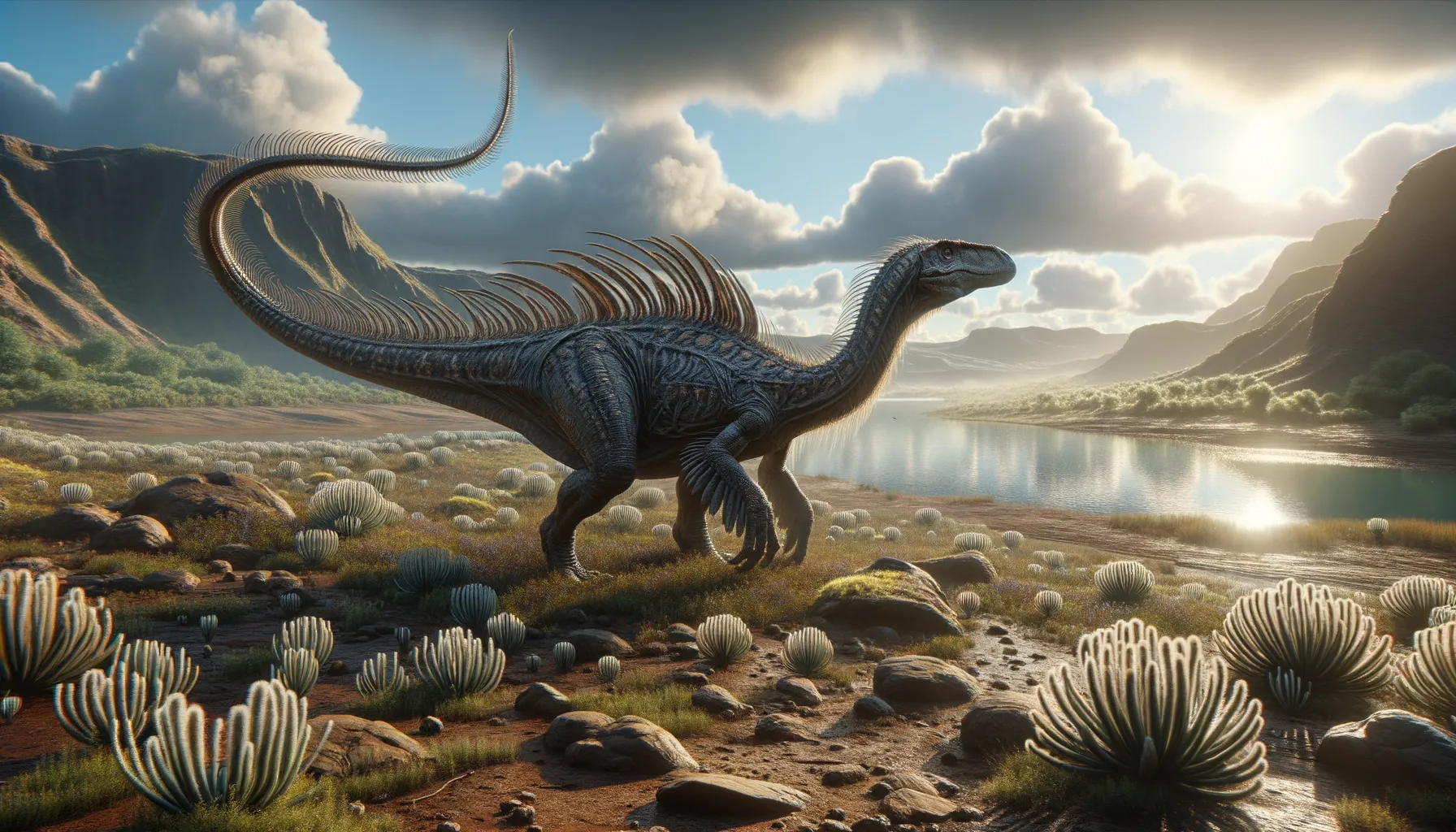
Longisquama
The scale-clad mystery of ancient skies!
Period
Triassic
Length
Reached up to 20 centimeters in length.
Height
Approximately 10-15 centimeters tall.
Weight
Estimated to be less than a kilogram.
Longisquama was a small, prehistoric reptile known for its remarkable elongated scales that resembled feathers. These peculiar back structures have sparked debates among paleontologists about whether they represent early attempts at forming feathers. Residing in the late Triassic period, this creature provided key insights into the evolutionary experiments of early vertebrates. Its discovery has fueled discussions on the potential evolutionary pathways leading to birds.
Diet
Longisquama was likely insectivorous, feeding on small insects and other invertebrates. Its lightweight body and agility would have facilitated quick movements necessary for capturing prey.
Hunting
Longisquama may have used its keen eyesight to spot prey from afar. It likely utilized ambush tactics, quietly lurking until a potential meal came close enough for a rapid strike.
Environmental challenges
Longisquama faced competition for food with other small reptiles and early mammals. Environmental shifts in the Triassic period meant it had to adapt to varying climates. Its unique elongated scales may have served additional functions like thermoregulation or display. The destruction of habitats due to volcanic activities was another challenge it encountered.
Speed
Possibly quick due to its lightweight body.
Lifespan
Exact lifespan unknown, likely similar to small reptiles.
First discovery
Discovered in the 1960s in Central Asia.
Fun Facts
- Longisquama lived about 235 million years ago during the Middle Triassic period.
- This prehistoric reptile was about the size of a modern-day chicken.
- Longisquama is known for having long, feather-like appendages on its back.
- These appendages might have been used for display, similar to how peacocks use their feathers.
- There is a debate among scientists whether these structures were precursors to feathers.
- Longisquama's unique features make it an interesting subject in the study of the evolution of birds.
- Fossils of Longisquama were first discovered in the 1960s in what is now Kyrgyzstan.
Growth and Development
Little is known about its growth due to scarce fossil records. Its small size suggests it could have reached maturity quickly. The development of its unique scales might indicate an evolutionary advantage or a specialized niche.
Habitat
Longisquama inhabited the forested regions of what is now Central Asia. This environment provided ample cover against larger predators. Dense foliage offered abundant hiding spots and a steady supply of insects. Minor climatic fluctuations in its period shaped the variety of available habitats.
Interaction with other species
As a small reptile, Longisquama might have been prey to larger theropods and early mammals. It would have competed with similarly sized reptiles and insects for food. Co-existence with other fauna could have influenced its adaptive traits, such as its elongated scales.
Natural lifespan
Its lifespan was possibly similar to that of contemporary small reptiles.
Reproduction
Reproduction was likely oviparous, similar to modern reptiles. Scant fossil evidence limits detailed understanding, but eggs might have been laid in safe, concealed areas. Hatchlings were presumably self-sufficient shortly after birth.
Social behaviour
Longisquama's social behavior remains largely speculative due to limited evidence. It may have been a solitary creature, like many small reptiles today, focused mainly on hunting and avoiding predation. Occasionally, it might have interacted with others of its kind during mating seasons.
Fossil locations
Fossils were mainly discovered in the Madygen Formation of Kyrgyzstan. This region has provided a glimpse into the Late Triassic era's biodiversity. The rare fossil record suggests more research is needed to fully map its range.
